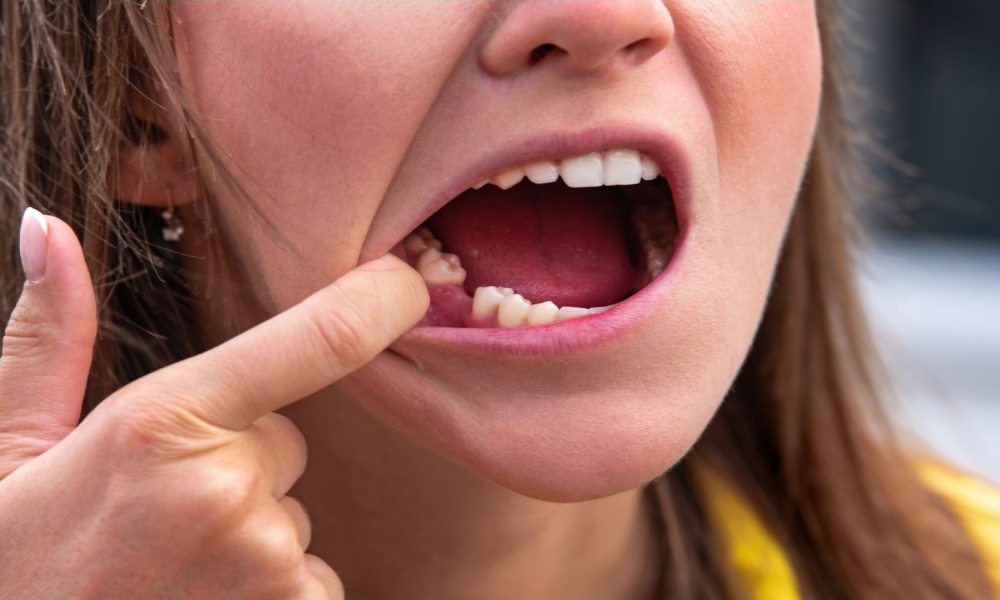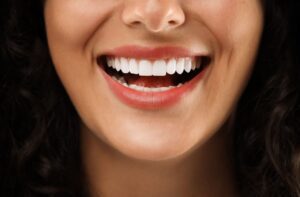When it comes to replacing missing teeth lost through decay or injury, many people seem reluctant to do so, particularly if the gap left behind is out of view. After all, why go to the trouble and expense of tooth replacement, if there’s no need?
Unfortunately, tooth loss can trigger a whole host of dental problems which, if left, can impact a person’s oral and overall health. In this post, we’ll discuss the aftermath of tooth loss, what occurs, and why it’s a big deal. Let’s get started.
Stage #1 – Straight after tooth loss
Bone resorption
A major concern following tooth loss is bone resorption. This starts pretty much as soon as a tooth is extracted or falls out.
When teeth are anchored by roots supported by bone tissue, the bone stays healthy through the stimulation provided by chewing. However, when a tooth and its root are missing, this stimulation ceases, causing osteoclasts (bone remodeling cells) to dissolve the bone tissue at the site of the missing tooth, while extracting the calcium and other minerals, back into the bloodstream.
Within the first six months after tooth loss, horizontal bone loss ranges from 29% to 66%, while vertical bone loss can be between 11% and 22%.
Loss of self-esteem
A missing tooth or teeth can affect a person’s confidence to such a point where they rarely smile or, when they do, they cover their smile behind their hands. In exceptionally bad cases, tooth loss can cause a person to become reclusive, apprehensive, and even, depressed.
Chewing difficulties
Typically, we chew food evenly on both sides of our mouth, with each group of teeth playing a specific role. However, if a tooth is missing, chewing on one side can cause excessive wear on the remaining teeth. Proper chewing is crucial for digestion, breaking food into smaller pieces for nutrient extraction and stimulating saliva production. Insufficient chewing can lead to digestive issues such as bloating, constipation, and gas.
Problems speaking
For proper pronunciation, our lips, tongue, and teeth must be aligned. Disruption to this alignment can make annunciation difficult. Tooth loss can cause embarrassment and self-confidence issues, leading some to avoid speaking altogether, unless they absolutely have to.
So that’s stage 1. Now, let’s see what happens at a later date.
Stage #2 – Ignoring tooth loss in the mid-term
The continuation of tooth loss for several more months leads to more serious dental issues, which include:
Shifting teeth
When gaps occur in the smile, adjacent teeth start to move toward the space to close them. This change in position can cause misalignment and malocclusion and can affect bite functionality.
Gum recession
Once bone resorption becomes apparent it can also cause the gums to recede at the adjacent teeth. Additionally, tooth misalignment makes it harder to brush away plaque, which in turn can lead to gum disease and its associated dangers.
Increased dental costs
While replacing a missing tooth straightaway is òften a straightforward procedure, it becomes more complex and costly the longer a patient waits.
Why?
Because in many instances, a patient may have suffered gum disease and bone loss which will need to be addressed before replacement teeth can be fitted.
As an example, one survey of 792 patients needing 1512 implants collectively, found that 77% of the cases required bone grafting.
As you can see, the consequences of not replacing missing teeth don’t go away. The longer you leave it the more problems can escalate. So, what happens when you still do nothing? Let’s take a look.
Stage #3 Long-term tooth loss
- Pain or discomfort while chewing
- An aching sensation in front of the ear that can spread to the neck
- Headaches, particularly under the temples, eyes, or around the lower jaw
- A clicking noise when opening the jaw
- A locked jaw, making it difficult to open or close the mouth
- Various Cancers
- Diabetes
- Respiratory Disease
- Heart Disease
- Alzheimer’s Disease







